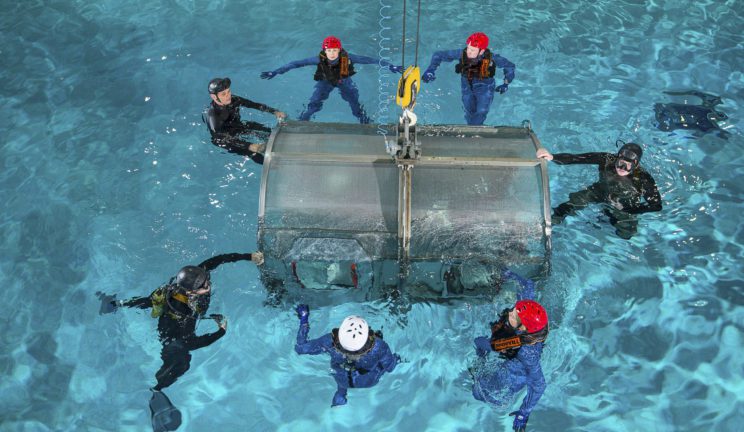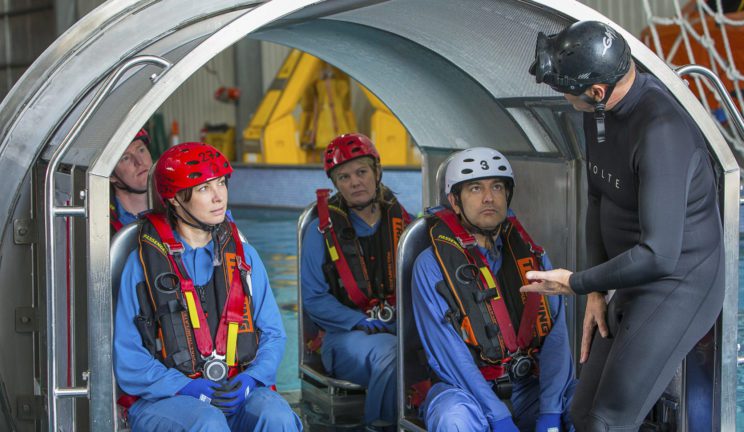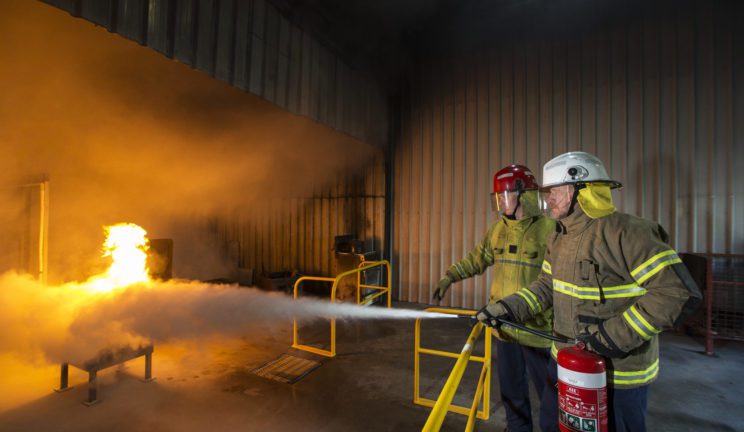Tropical Basic Offshore Safety Induction and Emergency Training (T-BOSIET) with Shallow Water Compressed Air Emergency Breathing System (CA-EBS) 5508 Perth · Darwin
OPITO Approved Safety Course for Offshore Workplaces in Tropical Waters | Practice CA EBS Use Underwater
ERGT Australia’s OPITO Tropical Basic Offshore Safety Induction and Emergency Training (T-BOSIET) with Shallow Water Compressed Air Emergency Breathing System (CA-EBS) is designed to meet the initial offshore safety and emergency response training requirements for personnel new (or returning) to the offshore oil and gas industry who will be supplied with a compressed air emergency breathing system (CA‐EBS) during offshore helicopter travel.
If you are unsure if this is the correct course for you, please check with your employer for specific training requirements for your role or call us if you have any queries before booking online.
Learning Objectives
The objectives of the OPITO TBOSIET (with Shallow Water CA-EBS) training are that delegates will be able to:
- Identify the generic hazards which are specific to offshore oil and gas installations, potential risks associated with those hazards, and how controls are put in place to eliminate or reduce risks
- Identify key offshore related safety regulations and explain the basic safety management concepts
- Demonstrate, in a simulated environment, that they can use the safety equipment, and follow procedures in preparing for, and during helicopter emergencies – with particular focus on escaping from a helicopter following ditching
- Demonstrate sea survival and first aid techniques
- Demonstrate that they can effectively use basic firefighting equipment, and practise self-rescue techniques in low visibility situations, to include smoke-filled areas
- Demonstrate familiarisation with the use of the Compressed Air Emergency Breathing System (CA-EBS)
- Demonstrate an understanding of their basic emergency response actions during a helicopter emergency using the CA-EBS
For more information on the OPITO unit outcomes please click here.
Medical and Health Standards
A current offshore or industry equivalent medical is required for this course. Please refer to the ERGT Huet Medical Form located under the Trainee Resources page for accepted medicals and requirements.
Additional Information
There is an increased risk of decompression sickness if you fly at altitude after breathing compressed air underwater. As per the Divers Alert Network (DAN) published Revised Flying After Diving Guidelines for Recreational Diving – May 2002, a minimum pre-flight surface interval of 12 hours is recommended. Trainees should take this into consideration when arranging for travel after course completion and refer to their company Health and Safety department for further advice.
Additional Requirements
Please bring swimwear and towel for in-water activities. Government-issued photo identification is required for course registration.
Structure and Assessment
This course is delivered through classroom presentations, group discussion and practical components within a simulated workplace environment. Trainees are required to demonstrate their competence through written assessment and practical exercises. Practical exercises include the trainee deploying the CA EBS with both hands, as well as purging and breathing off it whilst underwater. The CA EBS is not used during the Helicopter immersion exercises.
ERGT incorporate the use of Modular Egress Training Simulators (METS®) for HUET.
Skills Maintenance
To maintain this certificate it is an OPITO requirement to revalidate every 4 years (FOET or TFOET)
Did you know that you can refresh your OPITO training up to three (3) months prior to expiry without loss of validity? We recommend factoring course availability, your travel / swing requirements when booking your TFOET with CA-EBS (5929). You must refresh prior to your expiry date to qualify for a one-day refresher. Our team are here to help with any questions.
Authority / Regulator
This training is regulated and endorsed by OPITO, which is the global, not-for-profit, skills body for the energy industry.
†No GST applicable
*Price Includes GST
+Price includes GST / ^No GST applicable



